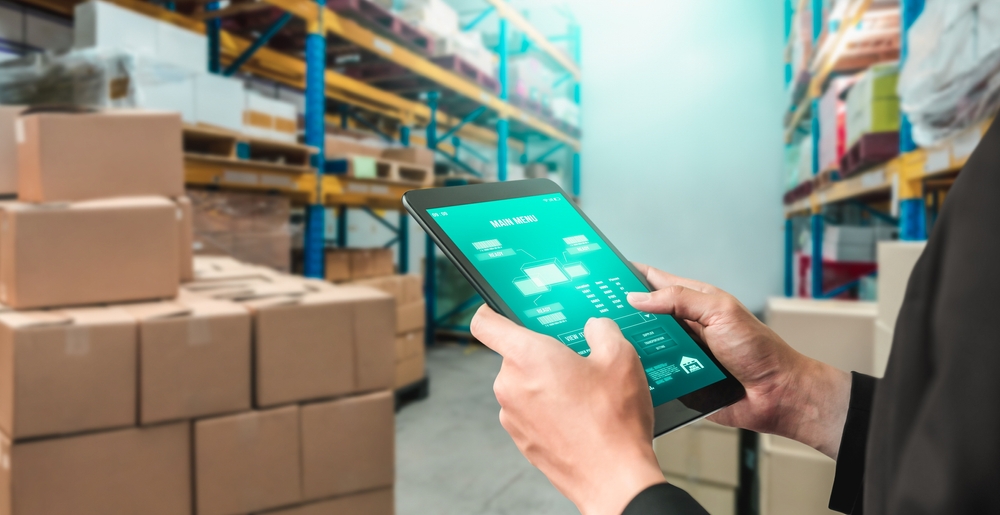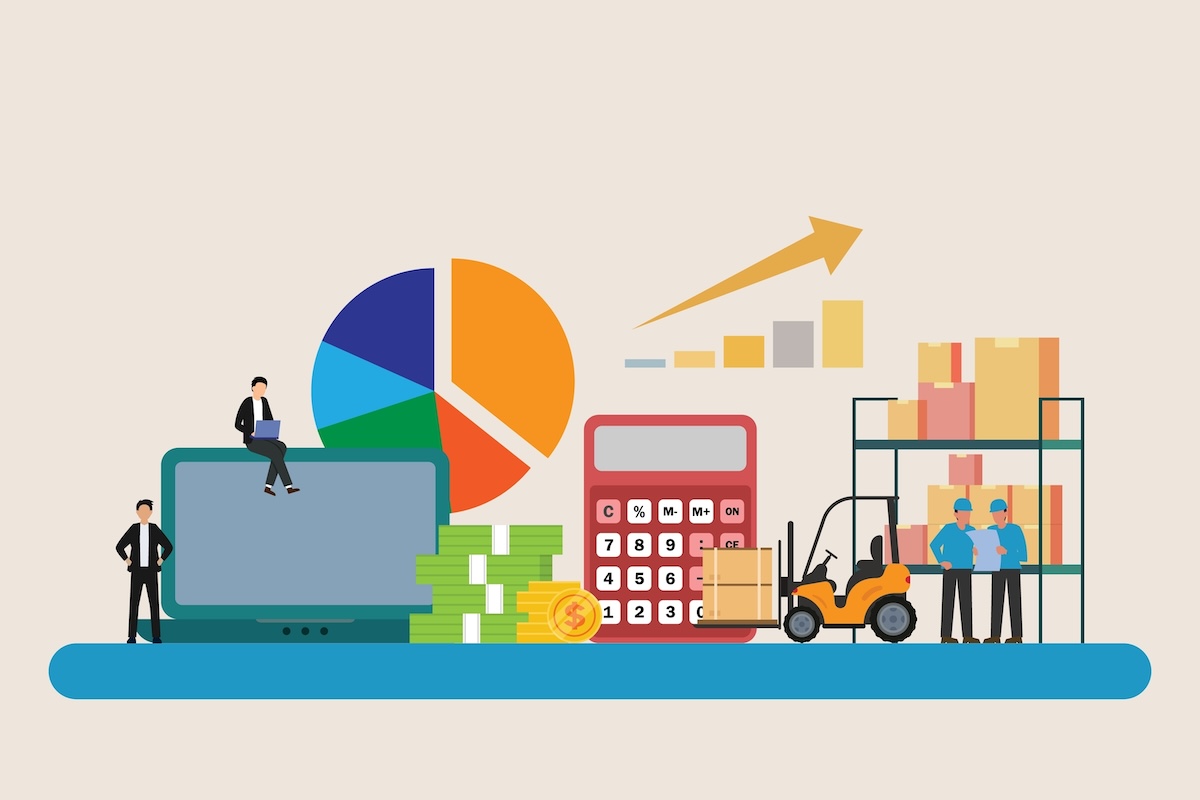Are you struggling to keep your distribution operations streamlined and responsive? Discover how ERP implementation can transform your business, enhance efficiency, and satisfy the rigorous demands of the convenience store industry.
Imagine you’re at the helm of a bustling distribution company dedicated to serving the ever-demanding convenience store sector. Each day brings a fresh set of challenges: late shipments, inventory discrepancies, and urgent customer queries that require immediate attention. It’s late on a Friday, and instead of planning your weekend, you’re poring over reports that just don’t add up. You think to yourself, “There must be a better way to streamline operations and reduce these constant headaches.”
At CDR Software, we understand these challenges intimately, which is why our DAC ERP system is tailored to help distributors in the convenience store industry find that better way. In this blog post, we’ll explore the transformative potential of implementing an ERP system, offering a comprehensive guide that addresses common challenges, provides actionable insights, and enhances operational efficiency. Our focus will be on helping you understand the steps involved in implementing an ERP system that can revolutionize the way you manage your distribution business.
Understanding the Need for ERP in Distribution
If you’re a manager or director in the convenience store distribution industry, you’re all too familiar with the complexities of distribution logistics. Managing a sprawling inventory across multiple warehouses potentially, ensuring timely delivery, and maintaining accuracy in orders and billing can quickly become overwhelming without a robust system, leading to inefficiencies and customer dissatisfaction.
What is an ERP System?
An ERP (Enterprise Resource Planning) system is an integrated software platform used to manage and streamline the core processes of a business. For distributors, ERP systems are crucial as they coordinate everything from inventory and order management to accounting and customer relations— all in one centralized system. This integration allows for real-time data access and decision-making, enabling quicker decisions and smoother operations.
For instance, DAC ERP by CDR Software is built with these capabilities at its core, specifically crafted for the unique needs of the convenience store distribution sector.

The Power of ERP Solutions
ERP systems are more than just software; they are comprehensive solutions that integrate all facets of your business operations into a single, cohesive unit. By automating processes and providing real-time data across departments, an ERP system helps you:
- Enhance Inventory Management: Track inventory levels, predict stock needs, and reduce wastage through accurate data insights.
- Streamline Order Processing: Simplify order entry, reduce errors, and speed up customer response times.
- Improve Financial Oversight: Consolidate financial data in one place for better budget management and financial reporting.
- Boost Customer Satisfaction: Ensure that client needs are met promptly and accurately, enhancing your company’s reputation.
For distributors in the convenience store industry, where rapid turnover and high customer expectations are the norms, adopting an ERP can be a game-changer.
Choosing the Right ERP System
Selecting the right ERP system is not just about the features it offers but also how well it aligns with your specific business needs. As a decision-maker in the convenience store distribution industry, you must consider several critical factors:
Industry Specificity: Opt for an ERP system that offers specialized functionalities tailored to the nuances of convenience store distribution, such as demand forecasting, multi-location management, and rapid replenishment capabilities.
Scalability: Ensure the ERP system can grow with your business. It should be able to handle increased transactions and more complex operations without significant upgrades.
User Friendliness: The system should be intuitive and easy for your team to adopt. A user-friendly interface reduces training time and helps in quicker adaptation.
Integration Capabilities: Check if the ERP can seamlessly integrate with your existing software tools, whether it’s accounting software, email marketing systems, or customer relationship management (CRM) solutions.
Support and Services: The vendor should offer comprehensive post-implementation support and training services to assist you during and after the transition.
Vendor Evaluation
Partnering with the right ERP vendor is as important as the software itself. Look for vendors with proven industry experience and positive client testimonials, which demonstrate their capability and reliability. For example, a vendor like CDR Software, known for its solid track record in the convenience store distribution sector, exemplifies what to look for in terms of industry expertise and responsive customer service.
Implementation Strategy
A phased approach to ERP implementation helps minimize risk and allows for adjustments based on feedback. Here’s how to break down the implementation into manageable phases:
- Phase 1: Focus on core functionalities like inventory and order management. Get these right before moving on to more complex features.
- Phase 2: Implement secondary features such as advanced reporting or CRM functionalities.
- Phase 3: Finalize integrations with other systems and fine-tune the setup based on user feedback and system performance.
Stakeholder Involvement
Engage stakeholders from every department affected by the ERP from the beginning. Their insights will help tailor the system to actual needs and ease the adoption process:
- Regular Updates: Keep all stakeholders informed through regular meetings or updates.
- Training Sessions: Schedule comprehensive training sessions with different departments to ensure everyone is comfortable with the new system.
- Feedback Loops: Establish clear channels for feedback to continually refine the implementation process.

Training and User Adoption
Developing a Comprehensive Training Plan
A well-thought-out training program is essential for successful ERP implementation. Here’s how to ensure effective training, and what you should expect from a good ERP vendor:
Customized Training Materials
Effective ERP training should include materials tailored to the specific needs of different user groups within your organization. Look for a vendor that provides detailed manuals, instructional videos, and quick-reference guides.
For instance, at CDR Software, we customize these resources to enhance understanding and operational efficiency across your team.
Role-Based Training
Training sessions should be organized based on user roles to ensure that each team member understands how the ERP system impacts their daily tasks and responsibilities. This role-based approach streamlines the learning process and is a standard practice at CDR, helping teams integrate the ERP system seamlessly into their operations.
Hands-On Training
A good vendor should offer practical, hands-on training sessions, allowing users to interact with the ERP system in a controlled environment. This method helps mitigate fears and reduces resistance, which is crucial for a smooth transition.
At CDR, we provide this training on-site and online to accommodate your team’s needs, minimizing disruption to your daily operations.
Continuous Education and Support
Training doesn’t end at go-live. A reputable vendor should offer ongoing education and support for new customers, new employees, and during software updates. At CDR, our commitment to continuous training involves a blend of in-depth product knowledge and industry-specific expertise, ensuring your team performs at its best at all times.
Additionally, responsive customer support post-implementation is vital. Look for a vendor that offers direct access to skilled technicians who can provide swift problem resolution. At CDR, we exemplify this with live support available by phone, email, and remote system access, ensuring that any issues are quickly addressed.
Encouraging Adoption and Managing Change
Change can be challenging, but effective change management strategies can facilitate smoother transitions. Here are tips on managing this change effectively:
Communicate the Benefits:
Regularly communicate the benefits of the new ERP system to all users to keep them motivated and engaged. Highlighting the improvements in efficiency, accuracy, and ease of use can help reinforce the value of the new system.
Incentives for Early Adopters:
Encourage adoption by offering incentives to those who embrace the system early and provide positive feedback. These could be recognitions, rewards, or even roles in further ERP development phases, which can turn early adopters into champions of the change.
Ongoing Support:
Establish a support system to assist users after the initial training period. This might include setting up a dedicated internal help desk if your organization has the capability, or it might involve arranging for structured access to your ERP vendor’s help desk services. Ensure that users know how to access these resources and what kind of help they can expect. Regular check-ins and online resources can also supplement this support, providing users with easy access to troubleshooting guides and FAQs.

Running Parallel Systems
Implementing a new ERP system is a significant transformation for any distribution company. To ensure a smooth transition and mitigate risks, many businesses opt to run their old system in parallel with the new ERP system. This approach serves as a safety net during the transition period and provides several benefits:
What Does Running in Parallel Mean?
Running in parallel involves operating both your old and new systems at the same time. This allows your business to continue using the established system while gradually phasing in the new ERP system. Employees can perform tasks in both systems, which helps in verifying and comparing the outputs to ensure the new system performs as expected.
Benefits of a Parallel Run
- Risk Mitigation: Running both systems concurrently allows your company to catch and address any errors or issues in the new ERP system without disrupting your ongoing operations. This safety net ensures that business processes continue uninterrupted while adjustments are made.
- Performance Comparison: This setup enables you to directly compare how the old and new systems handle the same tasks and data. It provides clear evidence of improvements or highlights areas where the new system may need further refinement.
Implementing a Parallel System Strategy
To manage a parallel run effectively, consider the following steps:
- Set Clear Objectives: Define specific goals for what you need to achieve during the parallel run. Objectives might include maintaining order processing times, ensuring inventory accuracy, or meeting customer service response benchmarks. These goals will guide the evaluation process and help measure the new system’s performance against the old one.
- Limited Time Frame: Establish a timeline for how long both systems will run in parallel. A typical period might last a few months. This limited timeframe helps maintain focus on the transition process and prevents the organization from relying indefinitely on the old system, which can delay full adoption of the new ERP.
- Feedback and Adjustments: Use the insights gathered during the parallel run to make necessary adjustments to the ERP system. Feedback from users performing their daily tasks in both systems is invaluable in this process. It helps identify discrepancies and areas for improvement before fully transitioning to the new system.
By carefully planning and executing a parallel run, your business can make the transition to a new ERP system with confidence, ensuring minimal disruption and maximizing the benefits of your new software solution.
Going Live: Final Testing and Launch
Preparation for Going Live
As you approach the end of your ERP implementation journey, final testing and preparations are critical to ensure a smooth transition:
Comprehensive Testing: Conduct thorough testing of the ERP system to ensure all functionalities work as expected under different scenarios. This should include stress tests and scenario-based testing to mimic actual operating conditions.
Data Verification: Verify that all data migrated from the old system to the new ERP is accurate and complete. Data integrity is crucial for operational success.
User Readiness: Confirm that all users are comfortable and proficient with the system. Address any last-minute training needs to ensure everyone is confident in using the new tools.
Launch Strategy
A strategic approach to going live can minimize disruptions:
Soft Launch: Consider starting with a soft launch, where you bring the ERP system online for a limited part of your operations before full deployment.
Monitoring and Support: Have IT staff and vendor support on hand to monitor the system’s performance as it goes live and to address any issues immediately.
Post-Implementation Support and Upgrades
Ongoing Support
Continuous support from your ERP vendor is vital to address any post-live challenges:
Help Desk and Technical Support: Ensure that you have access to a knowledgeable help desk that can resolve issues swiftly.
Regular Updates: Regular software updates are necessary to keep your ERP system secure and functioning optimally. Ensure your vendor provides these updates without disrupting your business operations.

Ensuring Continuous Improvement in Your ERP System
For an ERP system to remain effective as your business grows and evolves, continuous improvement driven by user feedback and proactive planning is essential. Here’s how we at CDR Software manage this process effectively:
Integrating User Feedback
At CDR Software, we understand the value of direct user input in refining and enhancing our ERP solutions. We employ several focused strategies to gather and integrate this feedback:
- User Steering Committees: We have established a User Steering Committee that includes industry experts and real users of our ERP system. This committee meets regularly to discuss the software’s performance, identifying areas for enhancement and innovation. Their insights ensure that our ERP solution continuously meets the practical needs of our users.
- Direct Feedback Channels: We provide our users with multiple channels to submit their feedback directly to us. This ensures that we can quickly identify and address specific issues, improving user satisfaction and system reliability.
Strategic Upgrade Planning
To keep our ERP system at the forefront of technological advancements and business practices, we engage in proactive strategic planning:
- Annual Surveys and Regular Check-ins: We conduct detailed annual surveys and maintain regular check-ins with our users to gather extensive feedback. This comprehensive approach allows us to understand the evolving needs of our users and the challenges they face, informing our upgrade strategies.
- User Conferences and Workshops: Our user conferences and workshops are key venues for discussing upcoming system enhancements, offering training on new features, and exploring industry trends. These events not only facilitate direct communication and feedback but also help build a community among our users, which is vital for collaborative improvement.
By ensuring a robust cycle of feedback and planned upgrades, CDR Software maintains the effectiveness and relevance of our ERP system, helping our users achieve long-term success and satisfaction.
Your Ultimate ERP Solution for Convenience Store Distribution: DAC by CDR Software
When it comes to managing the dynamic needs of convenience store distribution, our flagship product, DAC ERP, stands out as a comprehensive solution designed specifically for this industry. At CDR Software, we are 100% committed to enhancing the operational efficiency of distributors like you, who serve the convenience store sector.
Key Features of DAC Convenience Distribution ERP Software:
- Enhanced Regulatory Compliance and Reporting: DAC ERP comes equipped with industry-specific functionalities crucial for navigating complex regulatory environments, particularly in tobacco distribution. Features such as MSA MULTICAT reporting integration and comprehensive tobacco tax management ensure that distributors can effortlessly stay compliant with state, county, and city regulations. These tools automate the importing of pricing data and manage intricate tax calculations, significantly reducing manual workload and enhancing accuracy.
- Advanced Distribution Order Management: Experience the power of our ERP system with features that support mobile smartphone ordering and real-time access to customer information, ensuring that every order—whether it’s bulk tobacco or specific candy varieties—is processed efficiently and accurately. Our order management system is designed to handle rapid order turnover, crucial for meeting the dynamic demands of the convenience store industry.
- Streamlined Warehouse and Inventory Management: Optimize your warehouse operations with integrated RF capabilities, dynamic replenishment, and hands-free picking. DAC ERP is tailored to manage a diverse range of products—from perishables like dairy and baked goods in food and beverage to varied tobacco and candy products—ensuring freshness and timely dispatch. Real-time inventory management helps avoid overstocking or stockouts, maintaining optimal inventory levels that reflect seasonal and market trends.
- Robust Financial and Rebate Management: With DAC, financial management and rebate handling are made flexible yet robust, adapting to the specific rules of convenience store distribution. Navigate the financial intricacies of vendor management, maximize rebate opportunities through smart purchasing decisions, and ensure accurate, on-time retailer payments. DAC simplifies rebate management across various products, tracking multiple programs to help you stay on top of deadlines and maximize every opportunity.
- Comprehensive Business Management: DAC ERP offers operational reports with easy-to-understand graphs and charts, providing vital business intelligence that enhances decision-making processes. This comprehensive view aids in managing everything from vendor relations and customer loyalty programs to complex rebate scenarios, ensuring your business operations are streamlined and efficient.
Experience the CDR Difference:
For over 40 years, CDR Software has been a pioneer in providing innovative, feature-rich software solutions to wholesale distributors in the Convenience Products Industry. Our extensive experience and dedication are evident in our DAC Convenience Distribution ERP system, which is trusted by a growing number of distributors to streamline operations and boost efficiency.
Conclusion: Empowering Your Distribution Business Through ERP
Implementing an ERP system in the distribution industry, particularly for convenience store suppliers, represents a significant step towards operational excellence. The journey from selecting the right ERP system to training your team and going live involves careful planning and execution. However, the benefits — improved efficiency, better data accuracy, enhanced customer satisfaction, and more informed decision-making — can transform your business.
Recap of Key Steps to ERP Implementation Success:
- Assess Your Needs: Understand the specific challenges and requirements of your distribution business.
- Select the Right ERP: Choose an ERP system that is tailored to the convenience store distribution industry and can scale with your business.
- Implement Strategically: Take a phased approach to implementation, ensuring each stage is carefully managed and supported.
- Train and Support Your Team: Provide comprehensive training and ongoing support to facilitate smooth adoption and minimize resistance.
- Run Parallel Systems: Mitigate risks by running parallel systems, allowing for adjustments before full deployment.
- Go Live with Confidence: Prepare thoroughly for going live, ensuring all systems and team members are ready.
- Post-Live Support: Secure ongoing support and plan for regular updates and enhancements.
Take the Next Step
Discover how DAC Convenience Distribution ERP can revolutionize your distribution processes. Contact us to schedule a demo today to see DAC in action and explore how it can address the unique challenges of your distribution network.
Frequently Asked Questions (FAQs) About ERP Implementation for Distributors
What is ERP and how does it benefit convenience store distributors?
ERP, or Enterprise Resource Planning, is a type of software that integrates all facets of an operation, including inventory, order management, accounting, human resources, and more, into one unified system. For convenience store distributors, ERP systems can streamline operations, improve inventory management, enhance customer service, and provide real-time data to make informed decisions.
How long does ERP implementation typically take?
The duration of ERP implementation can vary significantly depending on the size of the business, the complexity of the system, and the specific needs of the distributor. Generally, it can take anywhere from several weeks to a few months or more. Detailed planning and phased rollouts can help manage the timeline effectively.
Can I keep using my current software alongside the new ERP system?
Yes, many businesses choose to run their existing software in parallel with the new ERP system during the transition period. This strategy helps mitigate risk by allowing you to compare system performances and ensure the ERP meets all operational needs before fully switching over.
What should I look for in an ERP vendor?
Look for vendors with a strong track record in the convenience store distribution industry, positive customer testimonials, and robust customer support. Ensure the vendor offers comprehensive training and post-implementation support.
How can I ensure my team adopts the new ERP system effectively?
Successful adoption often hinges on comprehensive training, regular communication about the benefits of the new system, and ongoing support. Consider implementing incentive programs for early adopters and providing resources for continuous learning.
What are the common challenges during ERP implementation?
Common challenges include managing change resistance among staff, data migration issues, and aligning the ERP system with existing business processes. Effective project management, stakeholder involvement, and choosing the right vendor can help address these challenges.
How frequently should I update my ERP system?
Regular updates are crucial to maintaining the security and efficiency of your ERP system. Most vendors provide updates and patches that should be implemented as recommended. Discuss with your vendor how often these updates are released and how they should be managed.
Can ERP handle the specific needs of seasonal inventory changes in convenience stores?
Yes, a modern ERP system, like DAC convenience distribution ERP from CDR Software, is designed to manage and forecast seasonal inventory demands effectively. Features like advanced analytics and real-time data access help predict market trends and adjust inventory accordingly.


